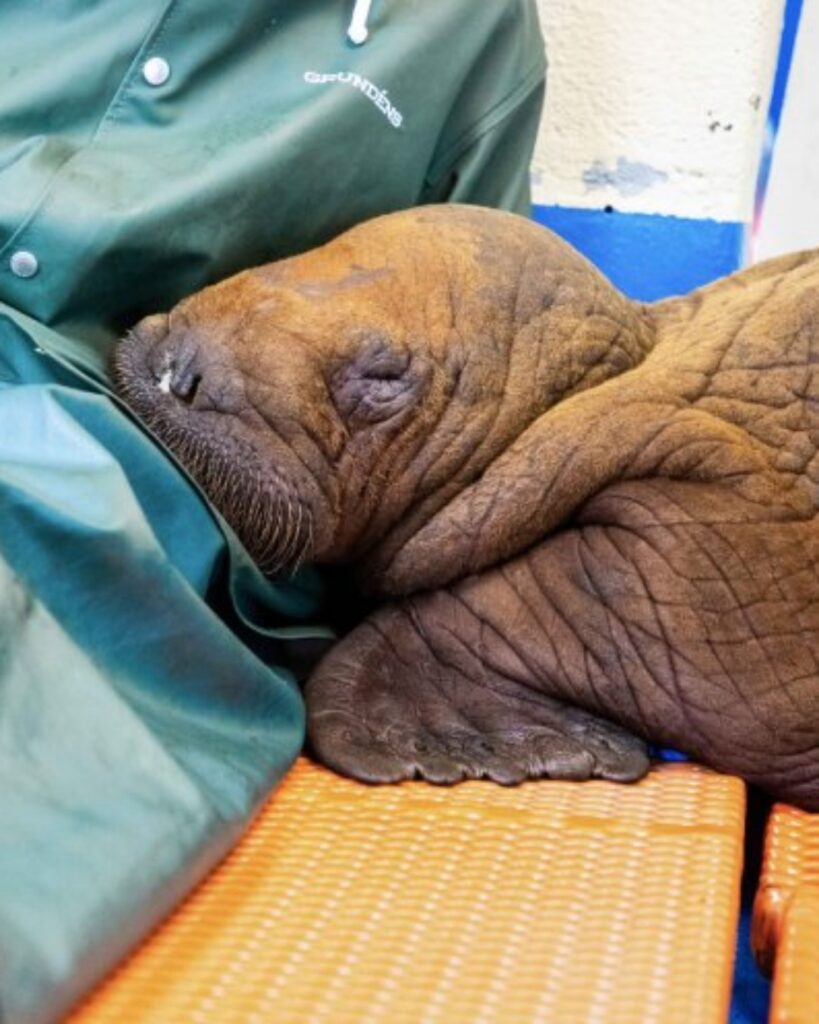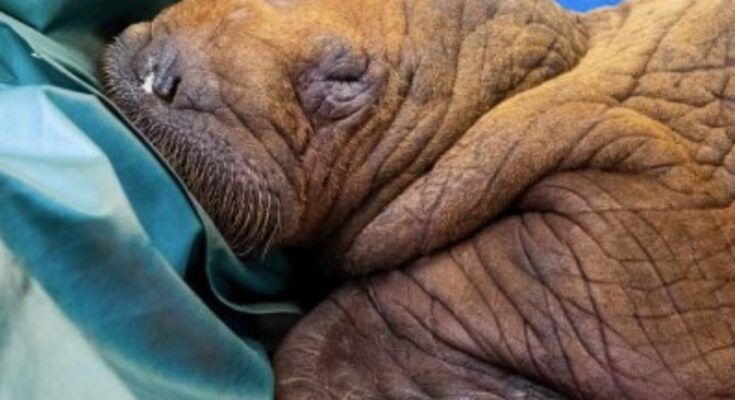
On the remote, wind-swept coast of Alaska’s North Slope, where the Arctic Ocean meets the edge of the world, a team of oil field workers spotted something extraordinary — and heartbreaking. A tiny Pacific walrus calf, alone and crying, stranded miles from the sea and its herd.
At first, they could hardly believe what they were seeing. Pacific walruses rarely come ashore in this region, and a lone calf, separated from its mother, was an even rarer sight. The workers quickly contacted wildlife authorities, knowing that every moment counted.
When responders from the Alaska Sea Life Center (ASLC) arrived, they estimated the calf to be about one month old — far too young to survive on its own. Without the constant presence and care of its mother, a walrus calf faces almost certain death.“ Walrus calves depend on maternal care for their first two years of life,” the ASLC said in a statement. “With no adults in the vicinity, it was apparent that the wayward calf would not survive long without intervention.”
So began a rescue unlike any other — one that would require science, dedication, and a deep understanding of what it means to provide comfort across species.
When the calf arrived at the Alaska Sea Life Center on August 1, it immediately became a historic patient. The center, which has been operating for over 25 years, had only treated ten walruses in its entire history — and none in the past four years.
As the team unloaded the calf, a mix of awe and urgency filled the air. The baby, weak and disoriented, made faint calls that echoed through the facility. “It broke our hearts,” said one staff member. “He was calling for his mother. We knew we had to step in and become that comfort.”
Caring for a walrus calf is not like caring for any other marine mammal. Walruses are deeply social and tactile creatures. In the wild, calves spend nearly every waking and sleeping moment pressed against their mothers — nursing, touching, and resting in constant physical contact.
Without that closeness, a calf can quickly grow anxious, stop eating, and deteriorate.
To replicate that bond, the ASLC staff instituted a 24-hour care schedule unlike anything else in their facility.
Around the clock, caretakers provide the young walrus with gentle, continuous touch — what they lovingly call “cuddle therapy.” Each caretaker takes turns sitting with the calf, stroking its thick, wrinkled skin, speaking softly, and holding it as it falls asleep.“It’s not just comfort,” explained Jane Belovarac, ASLC’s Wildlife Response Curator. “It’s essential to his survival. Walruses are social animals; they need that contact. We’re not just feeding him — we’re teaching him that he’s safe.”
The first night was critical. Would he eat? Would he calm down? Would his fragile body adjust after the trauma of being stranded?
By morning, the team had their answer.“We are lucky that his first night went well,” Belovarac said. “It isn’t often that we’re able to admit a walrus calf, but every time we do, we learn more about the species and how to care for them.”
Within days, the calf began drinking formula from a bottle, a promising sign. His appetite grew stronger, his eyes brighter. He responded eagerly to his caregivers, pressing his head against their arms, snuggling into towels, and even vocalizing contentedly during feeding time.
“He’s already starting to recognize the people caring for him,” one handler said. “When he sees us, he makes this soft warbling sound — almost like he’s saying hello.”
The team has also introduced enrichment toys to keep him mentally stimulated, mimicking the natural behaviors he would learn alongside his mother. They take care to balance his socialization — giving him comfort without allowing him to fully imprint on humans, so that one day, he may still have the chance to return to his kind.



